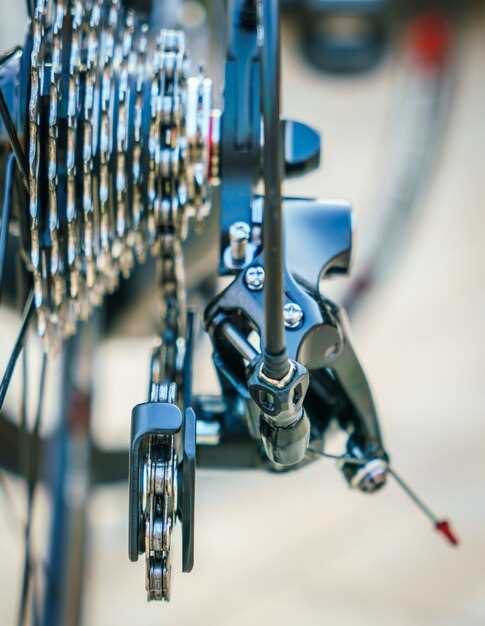
In the pursuit of superior performance in various industries, the significance of lightweight components cannot be overstated. The reduction of weight in machinery, vehicles, and consumer products has proven to have a profound impact on overall speed and efficiency. By focusing on materials and designs that minimize mass without sacrificing strength, engineers and designers can unlock new levels of capability in their creations.
Lightweight parts lead to a decrease in energy consumption, thereby enhancing performance metrics across the board. When components are designed to be both light and sturdy, they facilitate quicker acceleration and improved responsiveness, which are crucial for high-performance applications. This balance between weight and durability is not just a technical challenge; it’s a requirement for achieving competitive advantages in the fast-paced landscape of modern technology.
The journey towards high-performance solutions that prioritize lightweight materials is reshaping industries from automotive to aerospace. With innovative approaches to engineering, manufacturers are realizing that every gram saved can translate into substantial gains in speed and performance. As we explore the latest advancements in lightweight parts, their transformative potential becomes clear, paving the way for a new era of efficiency and effectiveness.
Material Innovations for Weight Reduction in Automotive Components

In the pursuit of enhanced performance, reducing the weight of automotive components stands as a critical priority. Lighter vehicles generally yield improved speed, acceleration, and fuel efficiency, making weight reduction a significant focus in automotive engineering.
Advanced composites have emerged as a game-changing innovation in this realm. Materials such as carbon fiber reinforced polymers (CFRP) and glass fiber composites offer exceptional strength-to-weight ratios. By substituting traditional metals with these lightweight materials, manufacturers can significantly decrease the overall weight of components, resulting in improved vehicle dynamics and responsiveness.
Another noteworthy innovation comes from the development of aluminum alloys. These alloys provide a favorable balance between strength and weight, making them ideal for various automotive parts, from structural components to engine blocks. The integration of high-strength aluminum not only reduces weight but also enhances corrosion resistance, contributing to the longevity of the vehicle.
Magnesium alloys represent another frontier in weight reduction. With a density lower than that of aluminum, magnesium is increasingly being used in components such as wheels and engine casings. The use of magnesium allows for substantial weight savings without compromising performance, thus playing a vital role in achieving higher speeds and better efficiency.
Additionally, the advent of 3D printing technologies facilitates the production of complex geometries that were previously infeasible with conventional manufacturing methods. This process allows engineers to design lightweight structures with optimized performance characteristics, directly contributing to reduced weight without sacrificing integrity.
In conclusion, the automotive industry’s shift towards innovative materials has proven essential in reducing weight and enhancing performance. By embracing advanced composites, aluminum alloys, magnesium, and cutting-edge manufacturing techniques, manufacturers can create vehicles that not only accelerate faster but also consume less fuel, thereby ensuring a more sustainable future for automotive engineering.
Design Strategies to Optimize Speed with Lightweight Structures
Achieving optimal speed through the use of lightweight structures involves a combination of innovative design strategies that prioritize material efficiency and aerodynamic performance. The reduction of weight without sacrificing structural integrity is crucial for enhanced velocity in various applications, from aerospace to automotive industries.
1. Material Selection: Choosing advanced materials such as carbon fiber composites or aluminum alloys can significantly decrease mass. These materials demonstrate strong mechanical properties while offering weight savings, allowing for quicker acceleration and better fuel efficiency.
2. Structural Optimization: Utilizing finite element analysis (FEA) enables designers to identify stress points and optimize the geometry of components. This approach facilitates the reduction of excess material, leading to a lighter structure that maintains performance under load.
3. Aerodynamic Design: Shape plays a vital role in reducing drag. Implementing streamlined designs can minimize air resistance, directly impacting speed. Features such as smooth surfaces, tapered edges, and active aerodynamic elements contribute to better airflow and reduced turbulence.
4. Modular Design: Breaking down structures into smaller, lightweight modules can allow for easier integration and potential weight reduction. This method enhances repairability and adaptability while maintaining high performance through efficient construction methods.
5. Additive Manufacturing: Employing 3D printing techniques facilitates the creation of complex geometries that traditional manufacturing cannot achieve. This technique allows for selective reduction of material in non-critical areas, achieving optimum weight while retaining strength.
6. Structural Reinforcement: Incorporating reinforcements in strategic locations can enhance durability without adding excessive weight. Techniques such as lattice structures or trusses can improve load distribution, allowing for further weight reduction while upholding structural performance.
In conclusion, optimizing speed through lightweight structures necessitates a multi-faceted approach that focuses on innovative materials, advanced design techniques, and efficient manufacturing processes. By implementing these strategies, the reduction of weight complements the pursuit of enhanced speed, leading to superior performance across various applications.
Real-World Applications: Success Stories of Reduced Weight in Racing

The world of racing continually seeks advancements that can deliver superior performance, and one of the most impactful strategies involves the reduction of weight in race cars. By implementing lightweight materials and engineering techniques, teams have witnessed remarkable gains in speed and efficiency.
One notable example is the use of carbon fiber components in the construction of racing vehicles. Teams like Ferrari have successfully integrated carbon fiber in various parts of their cars, resulting in significant weight reduction. This not only enhances the vehicle’s acceleration and cornering capabilities but also improves fuel efficiency, allowing cars to maintain higher speeds over extended periods without compromising performance.
Another prominent case is seen in the world of Formula 1, where teams have invested heavily in lightweight alloys and composite materials. Mercedes, for instance, has pioneered the application of aluminum-lithium alloys in their chassis, achieving a considerable reduction in weight. This strategic choice has directly contributed to their dominance in the sport, as lighter cars can achieve faster lap times and improved handling dynamics.
In endurance racing, reducing weight is critical, as it significantly influences a vehicle’s durability and tire wear. The Porsche 919 Hybrid utilized advanced lightweight materials to lower its overall mass, resulting in enhanced speed on long straights and improved agility in technical sections of the track. This reduction not only aided in breaking lap records but also played a crucial role in their success at prestigious events like the Le Mans 24 Hours.
The application of lightweight technologies in racing showcases how essential weight reduction is in achieving competitive advantages. By focusing on innovative materials and design strategies, racing teams continue to push the boundaries of speed, demonstrating that a relentless pursuit of lightweight solutions can lead to extraordinary success on the track.










